i) Hot compressed air
ii) In order to melt sulphur in the deposit
iii) Sulphur is not soluble in water
johnmulu answered the question on April 20, 2017 at 09:39
- The flowchart below shows some of the processes involved in large scale production of sulphuric (IV) acid. Use it to answer the questions that follow.(Solved)
The flowchart below shows some of the processes involved in large scale production of sulphuric (IV) acid. Use it to answer the questions that follow.

a) Describe how oxygen is obtained from air on a large scale.
b) i) Name substance A
ii) Write an equation for the process that takes in the absorption chamber
Date posted: April 20, 2017. Answers (1)
- The set up below was used to prepare a gas and study some of its properties. Study it and answer the questions that follow:
(Solved)
The set up below was used to prepare a gas and study some of its properties. Study it and answer the questions that follow:
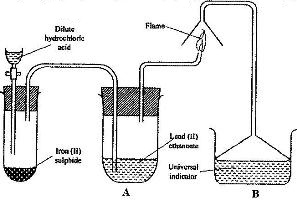
aState and explain the observations made in the:
i) Tube labelled A;
ii) State one precaution that should be taken when carrying out this experiment.
Date posted: April 20, 2017. Answers (1)
- Below is a sketch of graph showing the change in viscosity (Ease of flow) with temperature when solid sulphur is heated. Describe what happens to the sulphur molecules when is heated from 150oC to about 200oC.(Solved)
Below is a sketch of graph showing the change in viscosity (Ease of flow) with temperature when solid sulphur is heated. Describe what happens to the sulphur molecules when is heated from 150oC to about 200oC.
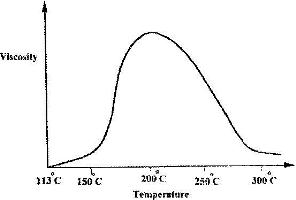
Date posted: April 20, 2017. Answers (1)
- The diagram below shows some processes that take place during the industrial manufacture of sulphuric (VI) acid(Solved)
The diagram below shows some processes that take place during the industrial manufacture of sulphuric (VI) acid

i) Write the equation for the reaction in which sulphur (VI) oxide gas is produced
ii) Why is it necessary to keep the gases pure and dry?
iii) Describe the process that takes place in chamber G
iv) Name the gases that escape into environment
Date posted: April 20, 2017. Answers (1)
- Study the flow chart below and answer the questions that follow.(Solved)
Study the flow chart below and answer the questions that follow.
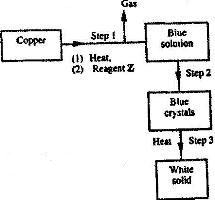
a) Name reagent Z.
b) Describe the process which takes place in step 2
c) Identify the white solid
Date posted: April 20, 2017. Answers (1)
- Dilute hydrochloric acid and solid sodium sulphite were reacted as shown in the set-up below(Solved)
Dilute hydrochloric acid and solid sodium sulphite were reacted as shown in the set-up below
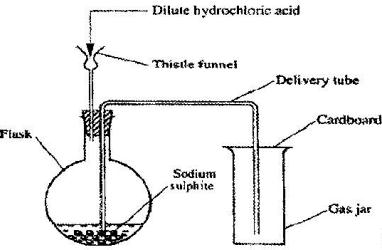
a) Name the gas produced in the flask
b) give two reasons why no gas was collected in the gas jar
Date posted: April 20, 2017. Answers (1)
- The aparatus shown below was set to prepare and collect hydrogen sulphide gas(Solved)
The aparatus shown below was set to prepare and collect hydrogen sulphide gas
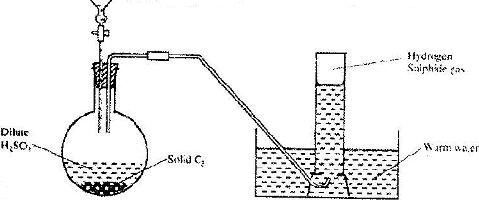
a) Name solid C2
b) Give a reason why warm water is used.
c) What observation would be made if hydrogen sulphide gas was bubbled into a solution of lead (II) nitrate?
Date posted: April 20, 2017. Answers (1)
- Study the flow chart below and answer the questions that follow.(Solved)
Study the flow chart below and answer the questions that follow.

a) Name (i) Compound T
ii) Gas U
b) Give a chemical test that you could use to identify gas U
Date posted: April 20, 2017. Answers (1)
- A sample of air contaminated with carbon (II) oxide and sulphur (IV) oxide was passed through the apparatus shown in the diagram below.(Solved)
A sample of air contaminated with carbon (II) oxide and sulphur (IV) oxide was passed through the apparatus shown in the diagram below.

Which contaminant was removed by passing the contaminated air through the apparatus Explain
Date posted: April 20, 2017. Answers (1)
- The diagram below represents the extraction of sulphur by Frasch process(Solved)
The diagram below represents the extraction of sulphur by Frasch process
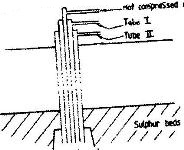
a) Name the substance that passes through tube;
I.
II.
b) What is the purpose of hot compressed air in the process?
Date posted: April 20, 2017. Answers (1)
- The table below shows the observations made when aqueous ammonia was added to cations of elements E, F and G until in excess. (Solved)
The table below shows the observations made when aqueous ammonia was added to cations of elements E, F and G until in excess.
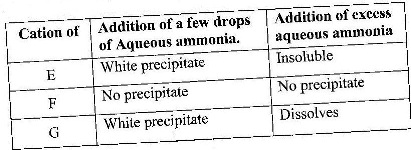
i) Select the cation that is likely to be Zn2+
ii) Given that the formula of the cation of element E is E2+, write the ionic equation for the reaction between E2+ (aq) and aqueous ammonia.
Date posted: April 20, 2017. Answers (1)
- Study the flow chart below and answer the questions that follow(Solved)
Study the flow chart below and answer the questions that follow

i) Identify gas J.
ii) Using oxidation number, show that ammonia is the reducing agent in step (VI)
iii) Write the equation for the reaction that occurs in step (V)
Date posted: April 20, 2017. Answers (1)
- Dry ammonia and dry oxygen were reacted as shown in the diagram below(Solved)
Dry ammonia and dry oxygen were reacted as shown in the diagram below

a) what is the purpose of the glass wool?
b) What products would be formed if red hot platinum was introduced into a mixture of ammonia and oxygen
Date posted: April 20, 2017. Answers (1)
- A student used the set up below to prepare a sample of nitrogen gas
(Solved)
A student used the set up below to prepare a sample of nitrogen gas
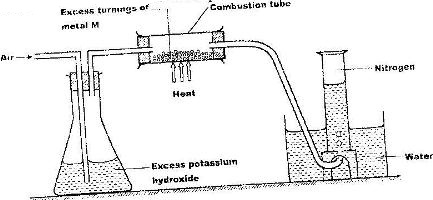
a) State the function of potassium hydroxide in the set up
b) Give a suitable metal M for use in the combustion tube
c) Give a reason why the nitrogen gas obtained is not pure
Date posted: April 20, 2017. Answers (1)
- Study the set-up below and answer the questions that follow.(Solved)
Study the set-up below and answer the questions that follow.
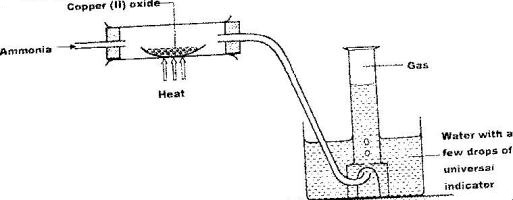
a) Write an equation for the reaction between ammonia and copper (II) oxide
b) During the experiment, the colour of the contents in the water trough changed. State the colour change observed and give an explanation.
Date posted: April 20, 2017. Answers (1)
- Dry ammonia gas was passed over heated lead (II) oxide and the products passed over anhydrous copper (II) sulphate as shown in the diagram below.(Solved)
Dry ammonia gas was passed over heated lead (II) oxide and the products passed over anhydrous copper (II) sulphate as shown in the diagram below.
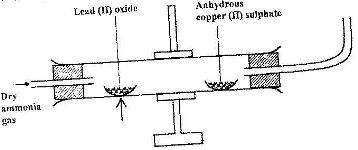
State:
a) Two observations made in the combustion tube
b) The property of ammonia gas in this experiment.
Date posted: April 20, 2017. Answers (1)
- Figure 1 shows a magnified scale of a micrometer screw gauge(Solved)
Figure 1 shows a magnified scale of a micrometer screw gauge

Record the reading indicated
Date posted: April 18, 2017. Answers (1)
- Figure 2 shows a flask filled with water. The flask is fitted with a cork through which a tube is inserted. When the flask is cooled, the water level rises slightly, and then falls steadily.(Solved)
Figure 2 shows a flask filled with water. The flask is fitted with a cork through which a tube is inserted. When the flask is cooled, the water level rises slightly, and then falls steadily.

Explain this observation.
Date posted: April 15, 2017. Answers (1)
- The scheme below shows some reaction sequence starting with solid N. Study it and answer the questions that follow.(Solved)
The scheme below shows some reaction sequence starting with solid N. Study it and answer the questions that follow.

a) write the formula of the complex ions in solution Q.
b) Write an equation for the reaction in step IV.
Date posted: April 15, 2017. Answers (1)
- In the laboratory, small quantities of nitric (V) acid can be generated using the following set up. Study it and answer the questions that follow
(Solved)
In the laboratory, small quantities of nitric (V) acid can be generated using the following set up. Study it and answer the questions that follow

i) Give the name of substance R.
ii) Name one other substance that can be used in place of sodium nitrate.
iii) What is the purpose of using tap water in the set up above?
Date posted: April 15, 2017. Answers (1)